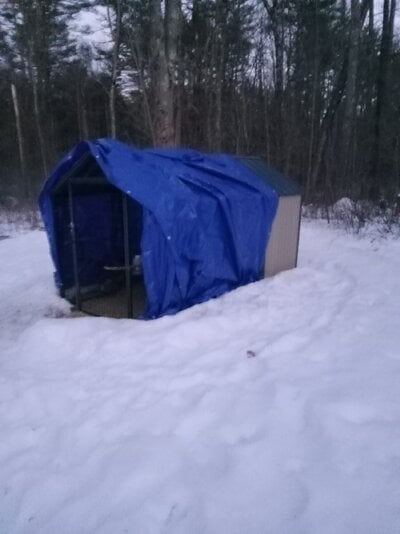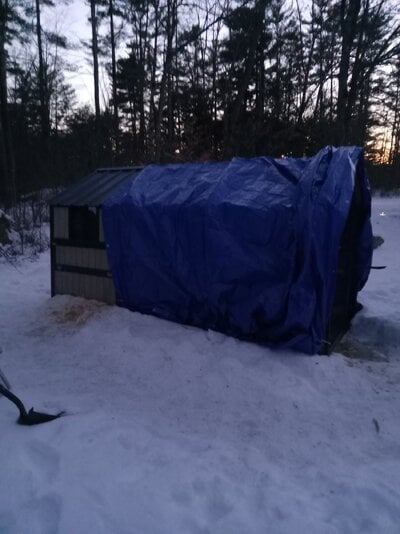ccoscina
Chirping
- Nov 10, 2021
- 85
- 179
- 91
This weekend an arctic blast is coming which will bring the temperature to 15 degrees below zero for one night. My chickens have never experienced this before, the coldest they have been through so far is about 2 degrees.
I recently purchased a heating pad which should help. It only raises the coop temperature by 5 to 10 degrees but they can get very warm if they stand next to it.
Do you believe a tarp would help? I want to make sure they get enough ventilation but I really want to reduce drafts as much as possible. I will also duct tape the ventilation window- it's shut but there are thin gaps around the edges.
I will also feed them hot oatmeal and give them warm water. But I'll only let them out for an hour or so on Saturday, I'll be keeping them inside most of the day. Will probably let them outside twice to make sure they get enough water, but if it's below zero they probably won't need much water anyway.
Any suggestions on what I should do is appreciated.
I recently purchased a heating pad which should help. It only raises the coop temperature by 5 to 10 degrees but they can get very warm if they stand next to it.
Do you believe a tarp would help? I want to make sure they get enough ventilation but I really want to reduce drafts as much as possible. I will also duct tape the ventilation window- it's shut but there are thin gaps around the edges.
I will also feed them hot oatmeal and give them warm water. But I'll only let them out for an hour or so on Saturday, I'll be keeping them inside most of the day. Will probably let them outside twice to make sure they get enough water, but if it's below zero they probably won't need much water anyway.
Any suggestions on what I should do is appreciated.






